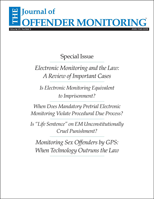Implementing a GPS Tracking Program for Community-Based Offenders: What Correctional Agencies Need to Know
Author: Jock Waldo.
Source: Volume 25, Number 02, Fall/Winter 2012 , pp.16-19(4)

< previous article |next article > |return to table of contents
Abstract:
As correctional agencies seek solutions for high costs of incarceration and limited budgets, many are taking a closer look at offender monitoring systems. Many agencies, in reviewing their options, are drawn to the highest level of offender monitoring— systems that include the use of Global Positioning System (GPS) technology. In the last decade, significant strides have been made in GPS tracking systems for community corrections as the technology has become smaller, more precise and, in many ways, more flexible to match the risk profile of a wide range of offender classifications. Before implementing a GPS tracking program in community corrections, however, there are numerous factors an agency should consider. For optimal implementation, agencies need to establish a set of policies and procedures that complement the technology and monitoring support provided by the vendor. These policies and procedures include establishing clear lines of communication as well as a protocol for responding to alerts produced by the GPS technology and clear sanctions when noncompliance is reported.Keywords: client risk; inventory management; inclusion zone; equipment compatibility
Affiliations:
1: BI, Inc..